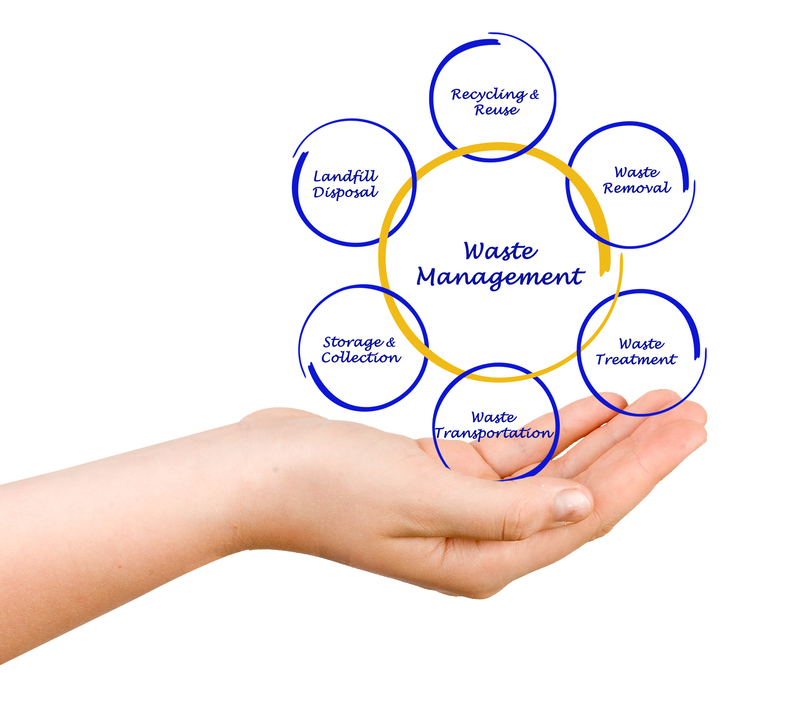Advantages and Disadvantages of Incinerating Trash
Posted on 20/03/2025
In today's society, waste management has become a major concern due to the increasing amounts of trash being produced daily. As a result, various methods of waste disposal have been developed. One such method is incineration, which involves burning solid waste at high temperatures in order to reduce its volume and generate energy. While this may seem like an effective solution for managing waste, it also has its share of advantages and disadvantages. In this article, we will explore both sides of the argument and weigh the pros and cons of incinerating trash.
Advantages of Incinerating Trash:
1. Reduces Volume of Waste:
One of the primary advantages of incinerating trash is that it significantly reduces the volume of solid waste by up to 90%. This helps to free up space in landfills and delay their inevitable saturation. With the reduction in waste volume, there is less need for landfills, which can be expensive and contribute to environmental pollution.
2. Generates Energy:
Incineration produces heat which can be used to produce steam and generate electricity. This energy can be used internally in the incineration plant or sold to external power grids. It is estimated that every ton of waste burnt in an incinerator can produce about 500 kWh of electricity. This not only reduces our dependence on fossil fuels but also provides a sustainable source of energy.
3. Suitable for Non-Recyclable Waste:
Not all types of waste are recyclable or suitable for composting. These non-recyclable wastes can effectively be disposed of through incineration, reducing the burden on landfills and decreasing the chances of pollution caused by improper disposal.
4.Temperature-based Destruction of Harmful Substances:
Incineration destroys all types of organic compounds through thermal decomposition at extremely high temperatures (up to 1000 degrees Celsius). This process breaks down toxic substances into harmless gases, ash, and inert materials, reducing the risks of soil and water contamination.
5. Reduced Greenhouse Gas Emissions:
Landfills are known to produce methane gas as waste decomposes, which is a potent greenhouse gas that contributes to climate change. Incineration helps to avoid this emission by burning waste at high temperatures, breaking down harmful gases like methane and carbon dioxide into less harmful substances like water vapor and carbon monoxide.

Disadvantages of Incinerating Trash:
1. High Initial Cost:
The construction of an incineration plant requires significant investment and can be an expensive undertaking for local municipalities. Additionally, there are maintenance and operating costs that need to be taken into consideration. As a result, some communities may not be able to afford such a facility.
2.Impact on Air Quality:
One of the biggest concerns surrounding incineration is its impact on air quality. The burning of waste releases pollutants such as nitrogen oxides, sulfur dioxide, particulate matter, and dioxins into the atmosphere. These pollutants can have a negative impact on human health and contribute to environmental pollution.
3.Possible Hazardous Ash Disposal:
While incineration reduces the volume of waste by 90%, it still leaves behind ash that must be disposed of properly. If not managed carefully, the ash can contain toxic chemicals that could pose a significant risk to both human health and the environment.
4. Limited Recycling Efforts:
The focus on incineration as a method of waste disposal could potentially limit efforts towards recycling and composting. By burning waste instead of segregating them for recycling or composting, we are not addressing the root cause of excessive waste production.
Pros:
- Reduces volume of waste
- Generates energy
- Suitable for non-recyclable waste
- Destroys harmful substances
- Reduces greenhouse gas emissions
Cons:
- High initial cost
- Impact on air quality
- Hazardous ash disposal
- Limited recycling efforts
Tips for Effective Waste Management:
1. Reduce, Reuse, Recycle: Before considering incineration as a waste management solution, we should strive to reduce our waste production, reuse products where possible, and recycle materials that can be recycled.
2. Invest in Alternative Technologies: While incineration may seem like the most convenient option for waste disposal, investing in alternative technologies such as anaerobic digestion and mechanical biological treatment can also be effective ways to manage waste.
3. Proper Management of Incineration Plants: To minimize the negative impact on air quality, incineration plants must have proper emission control systems in place and follow strict regulations to ensure the safe disposal of ash.
4. Implement Strict Waste Segregation: Cities and municipalities must implement strict policies and educate citizens on proper waste segregation to ensure that non-recyclable and hazardous waste is not being sent for incineration.

Takeaways:
Incinerating trash may seem like an effective solution for managing waste, but it also has its share of pros and cons. While it reduces the volume of waste and generates energy, it also has potential negative impacts on air quality and limited recycling efforts. As individuals and communities, we must strive towards reducing our waste production and investing in alternative waste management technologies to minimize our reliance on incineration.
Conclusion:
In conclusion, there are both advantages and disadvantages to incinerating trash. While it may offer a reduction in volume of waste and produce energy, it also has negative impacts on air quality and requires careful management of hazardous ash. As we move towards more sustainable waste management practices, it is crucial to consider all aspects and weigh the pros and cons before deciding on the best approach for managing our trash.

 020 3744 5548
020 3744 5548













